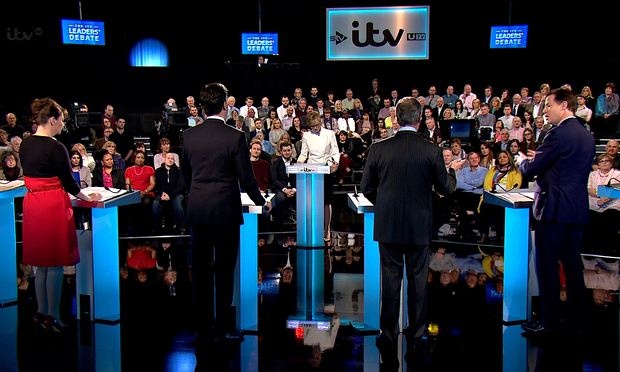8 reasons why election strategies have been dominated by fear
Social media – what social media?
There was a lot of talk about this being the first general election where creative use of social media would play a leading role. That doesn’t appear to have happened. Perhaps because all the main parties have been desperate to avoid making mistakes that could be magnified by social media. The Guardian points out that a lot of the messaging on Twitter and on Facebook has been relatively mundane. Of course, under the radar, many supporters from all the parties have been happily using social media to support their relevant causes. But it seems fair to say that this campaign has been less radical in its use of new media than was predicted.
Fear marketing is alive and well
Fear tactics are still alive and well. Pollsters have been telling politicians that the voting public has become highly sceptical of scare tactics. But they’re still at it: Labour warning the NHS will be privatised; Conservatives that Labour will join forces with the SNP and throw nuclear weapons overboard; Lib Dems that both parties are potential extremists; and UKIP that every migrant who doesn’t tragically drown in the Med is probably an ISIS terrorist.Don’t make a mistake!
Then there is fear of marketing. It’s clear that another key element of all election strategies is not to make a mistake. It’s one reason why leading politicians have not done many real walkabouts. With every word and action potentially recorded – and even streamed live online through apps like Periscope – the lack of control terrifies campaign managers. Remember Gordon Brown calling an old lady racist? Every step into a crowd increases the risk of “an election defining gaff”, as the media calls them. Maybe only Ed Milliband has bucked the trend and taken a chance this year, with his TV interview with Russell Brand.
In the post-election debrief, I expect many pundits will be saying if only one of the main candidates had taken a chance or two, spoken to voters on their own terms, they may have broken through.
Mainstream media still in running the show
This cautious approach plays into the hands of mainstream media – like national and regional daily newspapers, radio and TV. These outlets now have their own online and social media channels, so messaging goes further, but there is less risk of it being subverted or confused before it reaches voters. And at least traditional media have some rules to play by.Keep it simple – and keep repeating it
It’s not just three parties any more. There are now up to seven being given serious media air time. So there is an even greater imperative to keep messaging simple:
Labour – fairness.
Conservatives – the economy.Lib Dems – balance.
UKIP – immigration.Greens – ending austerity.
SNP and Plaid Cymru – more power. Can you think of any hard and fast policy promises? I’d bet not many. The focus on a few key issues, most relating to budget control, or lack of it, has been noticeable. Most people will be thinking, if I hear David Cameron say “strong and stable” one or time I will scream. But in a crowded market, repeating simple messages that might influence a wavering hand in the polling booth is seen as the best tactic.Image is still vital
Perhaps the biggest winner in the campaigning stakes has been Nicola Sturgeon. She’s buffed up her image, sharpened her look. Gone up a few notches on the authority stakes, while also seeming, for many voters across the UK as sensible and charming. Then again, it’s easy for English voters to like someone they don’t have to vote for – and in Scotland, she’s riding the crest of a wave that has been rolling for a long time.
Her success shows image – what the social scientists call likeability – is still vital. Milliband is a geek. Cameron is a toff. Clegg is a turncoat. Farage is a loud-mouth. They have all been fighting the stereotypes, not least in the TV debates. And the harder they try, the more the fickle voters look for the tell-tale signs. It’s telling that the leaders the ‘performance’ of the leaders in TV debates is the measure of success, not the substance of what they say.
